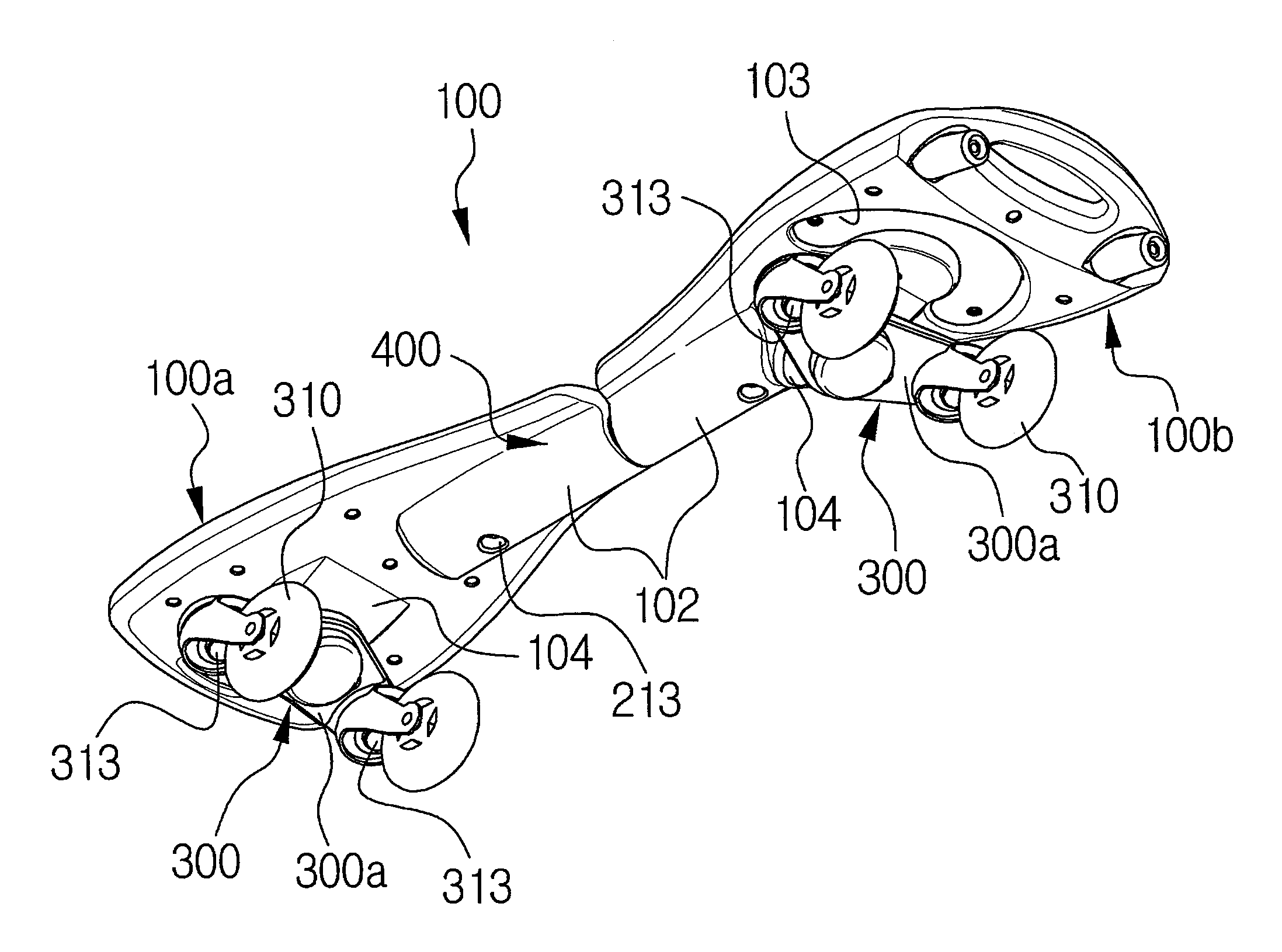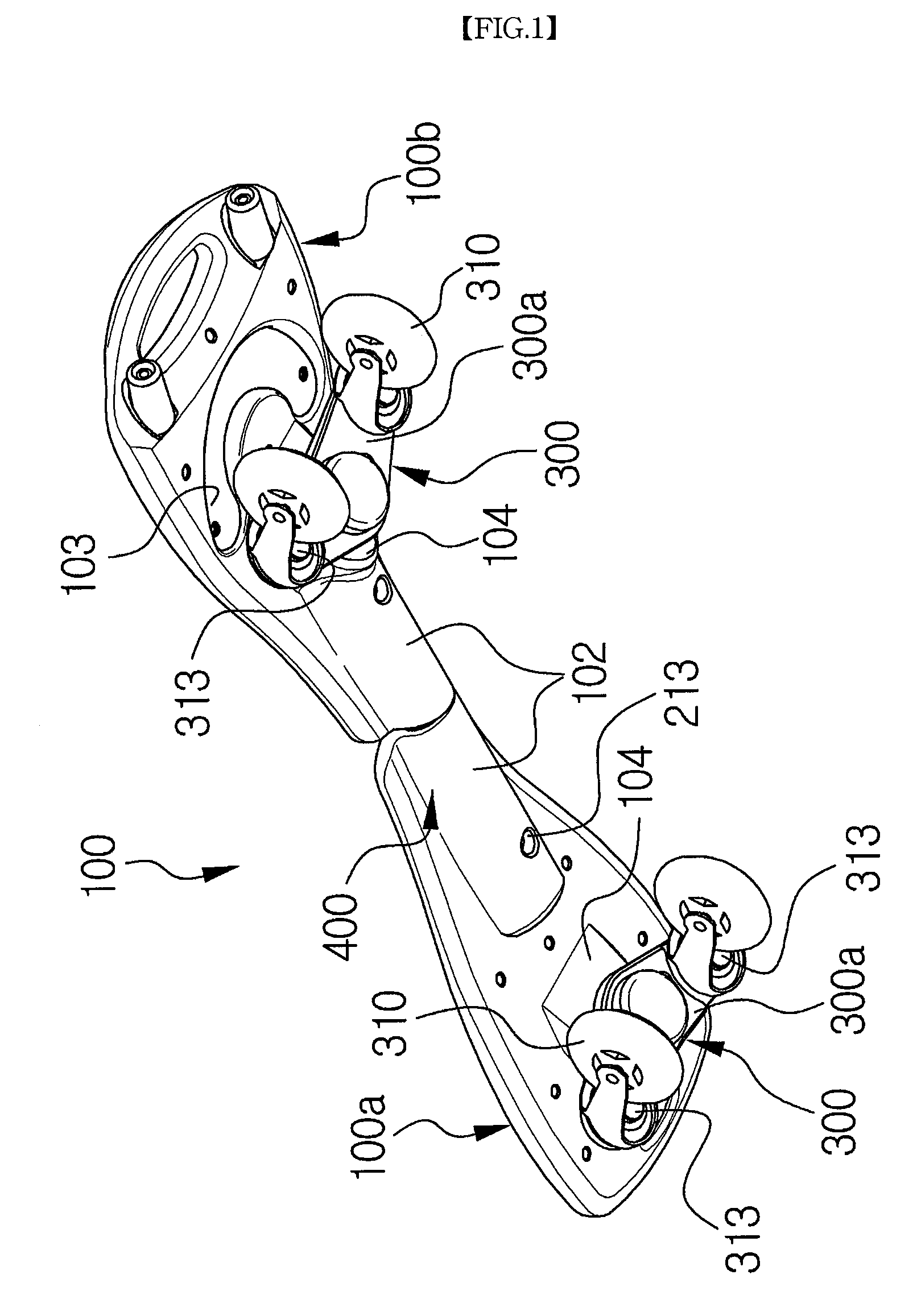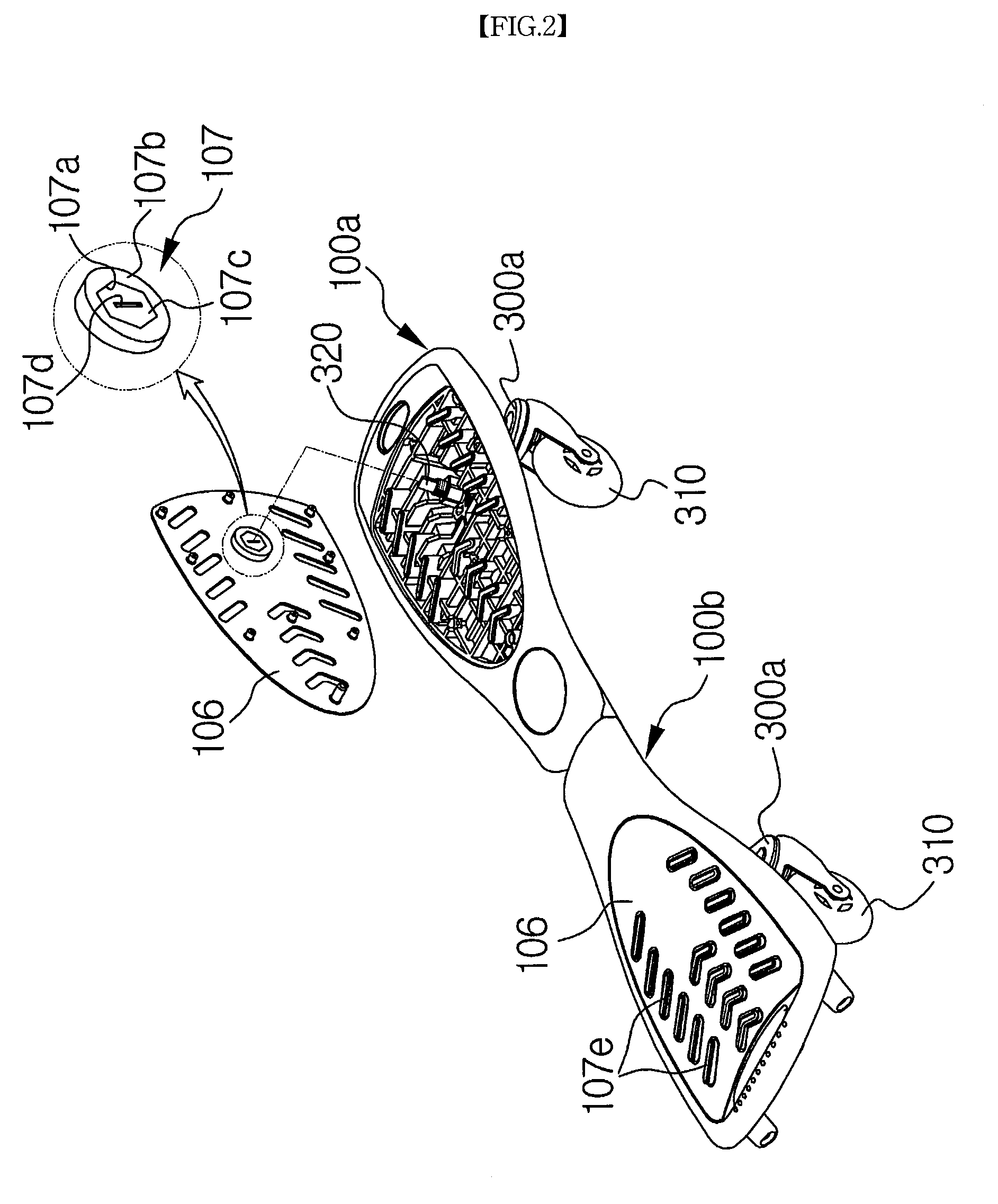Board where the voluntary advance is possible
a voluntary advance and board technology, applied in the field of boards, can solve the problems of reducing the interest in the riding and mobility of the skateboard, affecting the safety of the rider, and the ability to steer the skateboard, so as to improve the forward speed and steering performance, improve the forward force, and improve the effect of the turning radius
- Summary
- Abstract
- Description
- Claims
- Application Information
AI Technical Summary
Benefits of technology
Problems solved by technology
Method used
Image
Examples
Embodiment Construction
[0093]The operation of the voluntarily advancing board according to the present invention will be explained below.
[0094]With reference firstly to FIG. 11, more detailed explanation of the forward moving state of the voluntarily advancing board according to the present invention will be given below.
[0095]A rider intentionally rolls the voluntarily advancing board 100 such that the front board 100a is inclined to (L) side and the rear board 100b is inclined to (R) side.
[0096]Inclination of the front board to (L) side allows the caster means 310 provided at (L) side with respect to the main steering shaft 330 to act as a support point and the caster means 310 provided at (R) side with respect to the main steering shaft 330 to be moved forward while being turned.
[0097]At the same time, when the rear board 100b is inclined to (R) side, the caster means 310 provided at (R) side with respect to the main steering shaft 330 acts as a support point and the caster means 310 provided to (L) sid...
PUM
 Login to View More
Login to View More Abstract
Description
Claims
Application Information
 Login to View More
Login to View More - R&D
- Intellectual Property
- Life Sciences
- Materials
- Tech Scout
- Unparalleled Data Quality
- Higher Quality Content
- 60% Fewer Hallucinations
Browse by: Latest US Patents, China's latest patents, Technical Efficacy Thesaurus, Application Domain, Technology Topic, Popular Technical Reports.
© 2025 PatSnap. All rights reserved.Legal|Privacy policy|Modern Slavery Act Transparency Statement|Sitemap|About US| Contact US: help@patsnap.com



